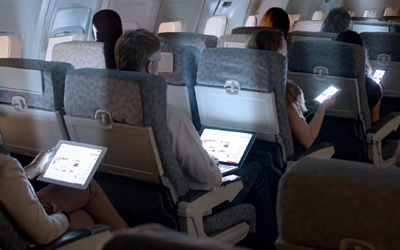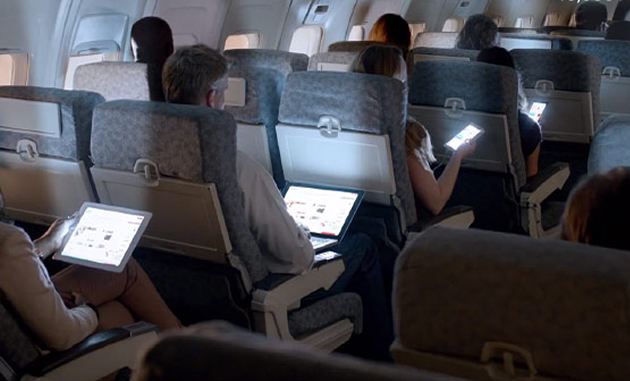The U.S. Federal Aviation Administration (FAA) has finally lifted the ban on use of personal electronic devices during the take-off and landing of U.S. flights, as long as such devices are used in airplane mode.
 While in airplane mode, your device blocks all data and voice transmission through mobile networks, which may interfere with the radio frequencies used by aircraft electronics. Airplane mode still allows you to connect with on-board Wi-Fi service, if available, and it also allows for short-range Bluetooth or NFC device-to-device communication.
While in airplane mode, your device blocks all data and voice transmission through mobile networks, which may interfere with the radio frequencies used by aircraft electronics. Airplane mode still allows you to connect with on-board Wi-Fi service, if available, and it also allows for short-range Bluetooth or NFC device-to-device communication.
But don’t defy your flight attendant’s orders to put away your tablet or iPod just yet– the current ban will remain in effect on an airline-by-airline basis until the FAA approves each airline’s new policies. In the event of low visibility for pilots, passengers may still be asked to shut down their devices, but the FAA says that such conditions only apply to about one percent of all flights.
The U.S. ban has long been controversial and questioned by many gadget afficionados, who questioned the validity or severity of mobile networks’ interference with airline electronics.
The new policy allows the airlines to determine how much radio interference their communications systems can safely handle, and set their own passenger usage policies accordingly. Airlines then must obtain FAA approval before enacting their new rules.
The FAA expects airlines to start submitting and then enacting their new policies over the next few months.





